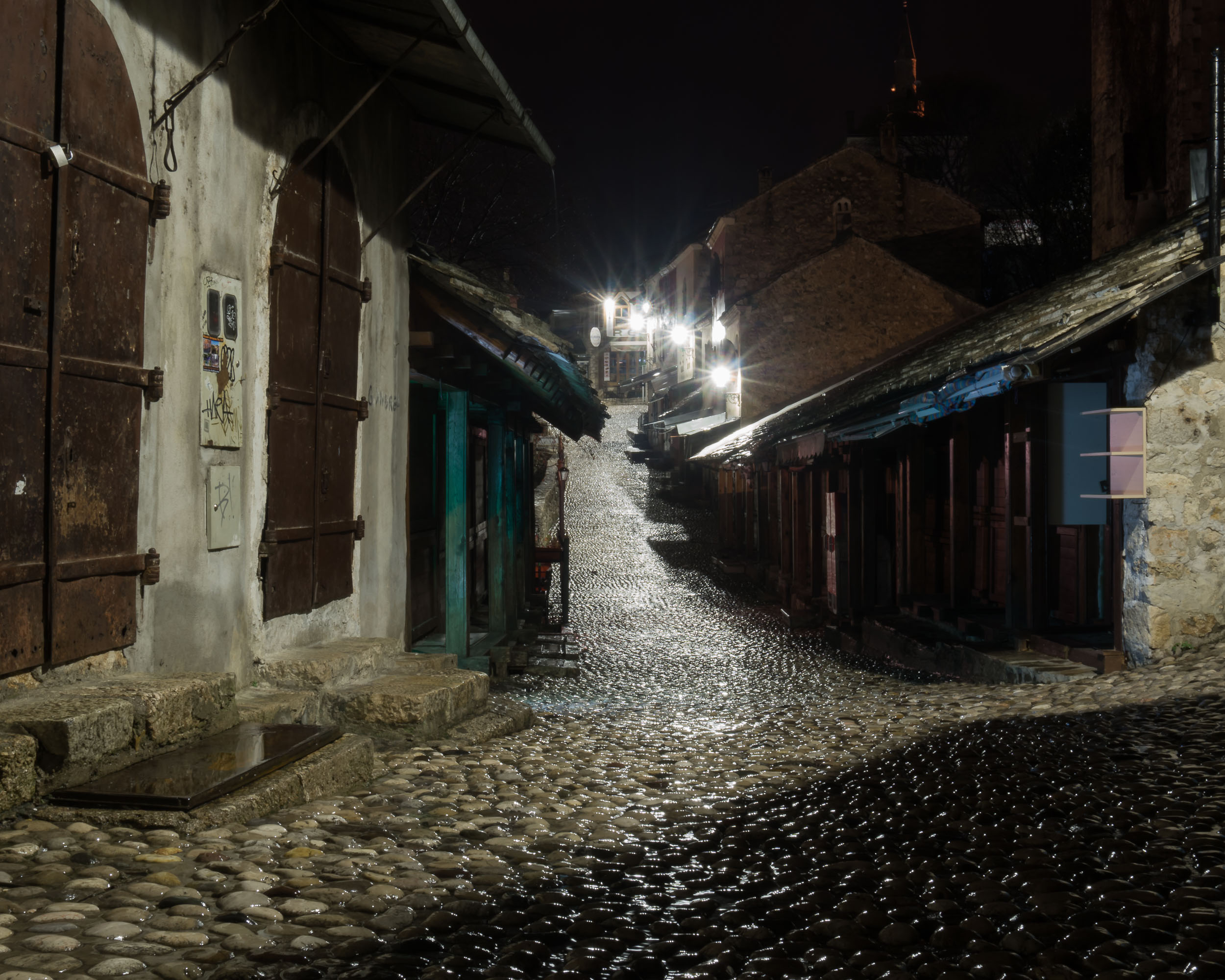Heavily influenced by the Ottoman empire, Mostar is considered the most important city in the Herzegovina region and is its cultural capital. The Stari Most, or Old Bridge, is one of the country’s most recognisable landmarks; sadly the 16th century masterpiece was destroyed in ‘93 during the Croat-Bosniak war. Faithfully rebuilt in 2004, it stands triumphant and draws thousands of visitors to the city each year.
Revisiting Mostar one year on, I wanted to walk through the streets at night. The weather was against me, Nemanja was tired and we'd had an intense few days where the pair of us self medicated with large quantities of raw garlic to shift Serbian rhinovirus. We had spent the day at an Abandoned Aircraft Hangar outside of the city and agreed upon return that I’d run around Mostar for an hour taking pictures. Nemanja headed back to the hostel to prepare the few potatoes and other miscellaneous morsels we had.
I started on the southern bridge, the Lučki Most, and then the southwestern bank. With only an hour before dinner, I had to act sharpish.
After returning to refuel, the hostel owner, Sonja, told me how to access the diving board platform, which you can see the silhouette of in the previous picture.
Nipping through the backstreets you must shimmy round a brick wall that is meant to prevent you from falling down the bank and into the drink; this is easier said than done when the slopes are saturated. You cannot see it here but I assure you it was pouring with rain this night so I held my cardboard hitchhiking sign over the camera to shield it.
Teetering on the rock-face, I climbed down below the platform. At one point, a thumb-sized fish leapt out of the water and slapped me; I was surprised to say the least. It was the fish’s lucky day as I scooped it up off the rock and carefully launched it to freedom down the river.
Juggling the camera, sign and my rucksack, I climbed the diving platform; it was a little windier than I would have liked and significantly wetter. It was now midnight and only few people were out to brave the elements.
The brushed-steel-like river was particularly cold and I can only imagine what it would be like for locals who jump off the top of the 24m (80ft) bridge and plunge below; it is a fearless tradition.
I crossed over the bridge and it was refreshing to see the old town deserted. Not having to rub shoulders, squeeze between the sedate holidaymakers or myself being the inconvenience, I could relax and take as much time as I wanted. You must be careful on the bridge’s Tenelia stone as the rain causes it to become incredibly slippery.
Sodden and happy, I trudged back to the hostel. It was lovely walking through the empty city until the wee hours and also a relief to return and dry off. Cotton and rain famously do not mix. I can attest to this and squelched for the next two days - but it was worth it.
I highly recommend a visit to Mostar; wet or dry the city is spectacular. The nature is beautiful and the architecture and history are fascinating. It’s also a great launch pad to other cities such as Dubrovnik, which is less than three hours away. Book a ticket and go!










